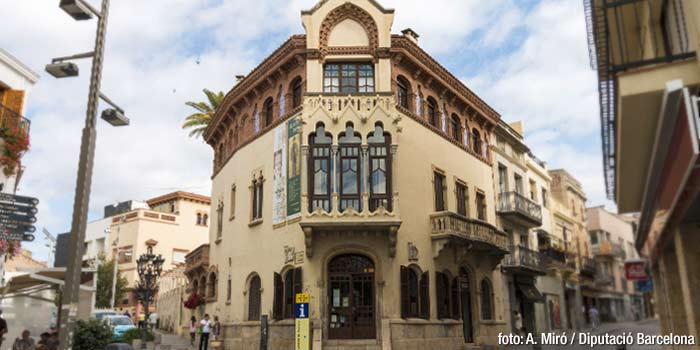
Casa Domènech i Montaner, Canet de Mar
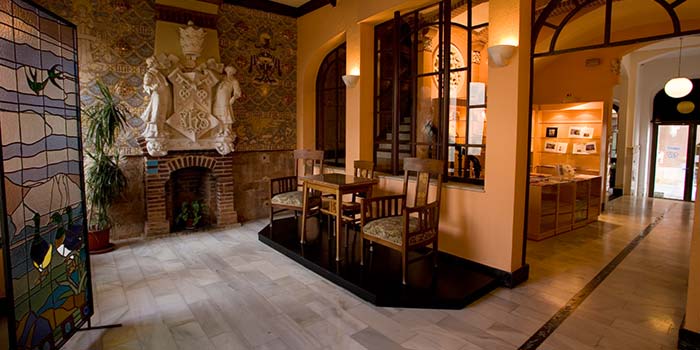
Casa Domènech i Montaner, Canet de Mar
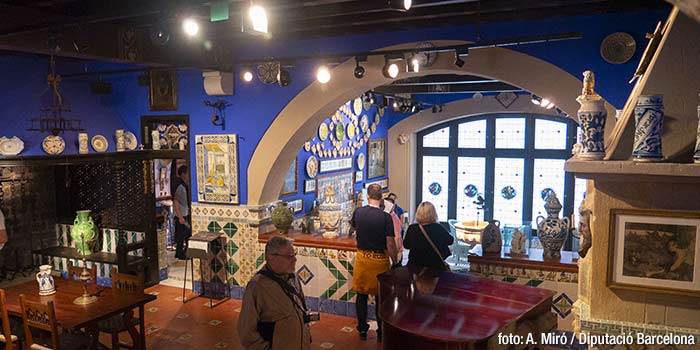
Cau Ferrat, Sitges
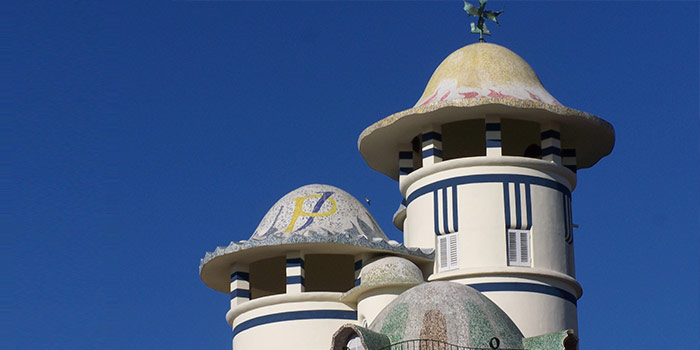
Torre de la Creu, Sant Joan Despí
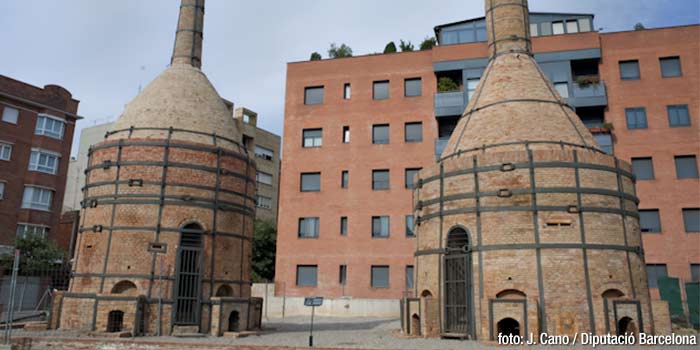
Keramikmuseum La Rajoleta, Esplugues de Llobregat
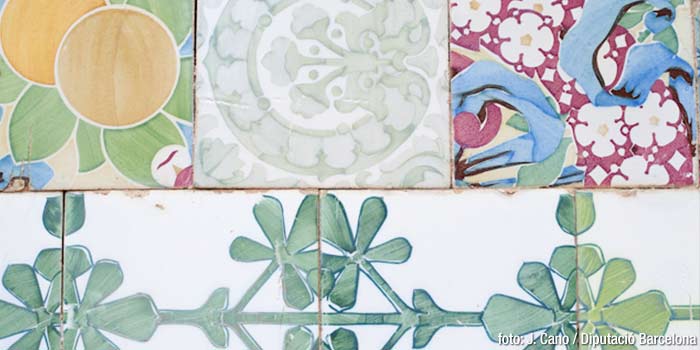
Keramikmuseum La Rajoleta, Esplugues de Llobregat
Eine Reise durch die Hallen des Modernisme
Zu Beginn des letzten Jahrhunderts war der Jugendstil in Paris der letzte Schrei: geschwungene Fassaden, Plakate mit Blumenmotiven, schmiedeeiserne Treppen … Eine neue Ästhetik, die das moderne Stadtleben widerspiegelte und in Katalonien großen Anklang fand. Als der Jugendstil jedoch die Pyrenäen überquerte, interpretierten ihn die katalanischen Architekten auf ihre eigene Weise neu. Das Ergebnis ist der sogenannte katalanische Modernisme.
In der Überzeugung, dass man Tradition nicht aufgeben müsse, um modern zu sein, suchten die Vertreter des Modernisme in Katalonien nach einer neuen Synthese zwischen Vergangenheit und radikaler Moderne. So wurden beispielsweise alte Lösungen wie das katalanische Gewölbe und die Glasmalerei wieder aufgegriffen und Neuerungen wie Sichtziegel, Schmiedeeisen, glasierte Keramik, Sgraffito und einer der großen Beiträge Antoni Gaudí, das Trencadís-Mosaik, integriert.
So gelangten Innovationen in den Bereichen Möbel, Textilien, Bildhauerei und angewandte Kunst in Sommerresidenzen, Kirchen, Krankenhäuser und Gärten, Fabriken und Weinkellereien. Lassen Sie sich von der Entfernung nicht abschrecken: In den Regionen um Barcelona erwartet Sie ein umfangreiches Jugendstil-Erbe. Das Porträt einer Dame mit Reifrock, ein Zimmer mit abgerundeten Formen oder die kleine Schule für die Kinder der Arbeiter einer Textilkolonie können eine größere Aussagekraft haben als die beste Geschichtsstunde. Einige Empfehlungen:
Casa Domènech i Montaner (Canet de Mar)
Das Domènech-Haus ist das letzte Werk des katalanischen Architekten. Es handelt sich um das Wohnhaus der Familie Domènech, ein Juwel des Modernisme, in dem zahlreiche Elemente der angewandten Kunst wie Keramik, Tischlerei und Glasmalerei harmonisch integriert sind. Alle Räume können besichtigt werden.
Cau-Ferrat-Museum (Sitges)
Es wurde 1893 vom Künstler Santiago Rusiñol als Wohnhaus und Atelier gegründet. Es beherbergt Sammlungen von Gemälden, Schmiedearbeiten, Keramik, Glas, Archäologie, Skulpturen und Möbeln aus dieser Zeit. Die von Rusiñol organisierten Veranstaltungen mit Künstlern, Musikern und Schriftstellern verwandelten Cau Ferrat in den sogenannten Tempel des Modernisme.
Torre de la Creu (Sant Joan Despí)
Josep Maria Jujol war einer der großen Architekten des katalanischen Modernisme, obwohl er leider immer im Hintergrund stand. Dieses Gebäude entwarf er als er Stadtarchitekt von Sant Joan Despí war und ist eines seiner bedeutendsten Werke. Es kann im Rahmen einer Führung zusammen mit anderen Häusern des Architekten nach vorheriger Terminvereinbarung besichtigt werden.
Keramikmuseum La Rajoleta (Esplugues de Llobregat)
La Rajoleta war eines der Unternehmen, das sich der industriellen Keramikherstellung widmete und mit dem Modernisme seine Blütezeit erlebte. Architekten wie Gaudí, Gallissà, Puig i Cadafalch sowie Domènech i Montaner verwendeten in ihren architektonischen Werken Keramikelemente, die in der Fabrik in Esplugues hergestellt wurden. Die Fabrik ist heute zum Keramikmuseum La Rajoleta umgebaut worden und kann von Dienstag bis Sonntag besichtigt werden.
Wussten Sie schon?
Man sagt, dass der Vertreter des Modernisme ein Romantiker ist, der die Natur betrachtet. Weit entfernt von der Rationalität der geraden Linie – Symmetrie ist verboten – suchten die Künstler jener Zeit nach organischen Formen und einer Fülle von Details. Geschwungene Linien prägten die Gebäude, und die Fassaden wurden mit ornamentalen Motiven verziert. Zahlreiche sinnliche Frauenbilder und Naturformen schmückten in jenen Jahren Tausende von Möbeln, Plakaten, Schmuckstücken und allerlei Alltagsgegenstände.
Weiterführende Informationen:
Casa Museu Lluís Domènech i Montaner Museu del Cau Ferrat
Visita guiada a l'Itinerari Jujol de Sant Joan Despí
Museu de Ceràmica La Rajoleta

